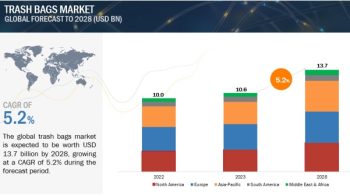The Cold Chain Market is estimated to account for a value of USD 203 billion in 2018 and is projected to grow at a CAGR of 7.6% from 2018, to reach a value of USD 293 billion by 2023, as per a report by MarketsandMarkets.
Why lack of infrastructural support in emerging markets remain a challenge?
The cold chain industry is fragmented in emerging markets such as India, China, and in Latin American countries. Cold chain service providers do not have the technology required to build high-quality cold chain infrastructure. They are unable to cover the entire value chain, from procurement in rural areas, through to transportation in reefer trucks, and delivery at retail centers in urban areas. For instance, fruits & vegetables are often left near the fields until a truckload is accumulated. Pre-cooling facilities are not available, sanitation is poor, or there is overloading of refrigerated storages and transport. The cold chain systems in these markets are not compatible for use for multiple perishable commodities.
Growth of international trade due to trade liberalization
Globalization has increased due to trade liberalization, advancements in transport infrastructure & communication technologies, and growth of multinational companies in the food retail sector. It has boosted international trade in perishable foods such as dairy & frozen desserts, fruits & vegetables, meat, fish and seafood, and bakery & confectionery products. Every region or country exports food and agricultural products that it produces and imports food products that it is deficient in. This has resulted in almost any fruit, vegetable, or processed food being available at local supermarkets all the year round.
To speak to our analyst for a discussion on the above findings, click Speak to Analyst
Several forces drive and enhance the trend of perishable commodities trade at the global level. The lowering of tariffs and non-tariff barriers to international trade has encouraged rapid growth of cross-border movement of perishable commodities. Growth of international trade in perishable foods is affected by the following factors:
The refrigerated storage segment is projected to be the fastest-growing segment in the global market during the forecast period.
The cold chain market has been segmented, by type, into refrigerated storage and refrigerated transport. Refrigerated storage capacities are growing in Asia Pacific countries due to the increased need to reduce wastage of perishable foods. In the last few years, the market for refrigerated storage has drastically grown, with a shift from food products stored in cold storage warehouses to the provision of value-added services to customers.
By temperature type, the frozen segment is projected to dominate the market during the forecast period.
A cold chain for chilled and frozen foods provides uninterrupted handling of the products within a low-temperature environment during each stage of the value chain—including harvest, collection, packing, processing, storage, transport, and marketing—until it reaches the final consumer. By temperature type, the frozen segment is estimated to have a comparatively larger market share in 2018. The chilled segment is expected to grow due to a large-scale chilling of food products for their preservation and to extend their shelf lives from few days to few weeks.
Key Market Players
The leading players that dominated the cold chain market include Americold Logistics (US), Preferred Freezer Services (US), Burris Logistics (US), Lineage Logistics (US), and Nichirei Logistics (Japan).
To know about the assumptions considered for the study, download the PDF brochure
The key players have been exploring the market in new regions by adopting mergers & acquisitions, expansions, investments, new service launches, agreements, collaborations, and joint ventures as their preferred strategies. These players have been exploring new geographies through expansions and acquisitions across the globe to avail a competitive advantage through combined synergies.

